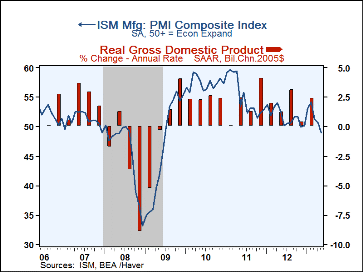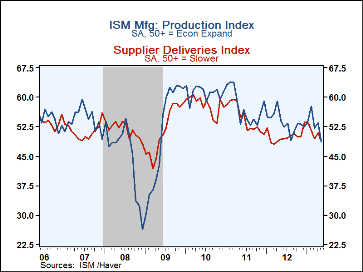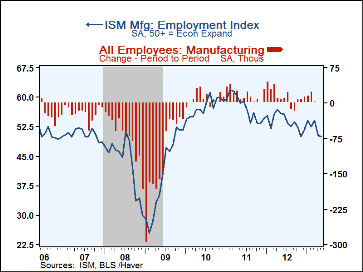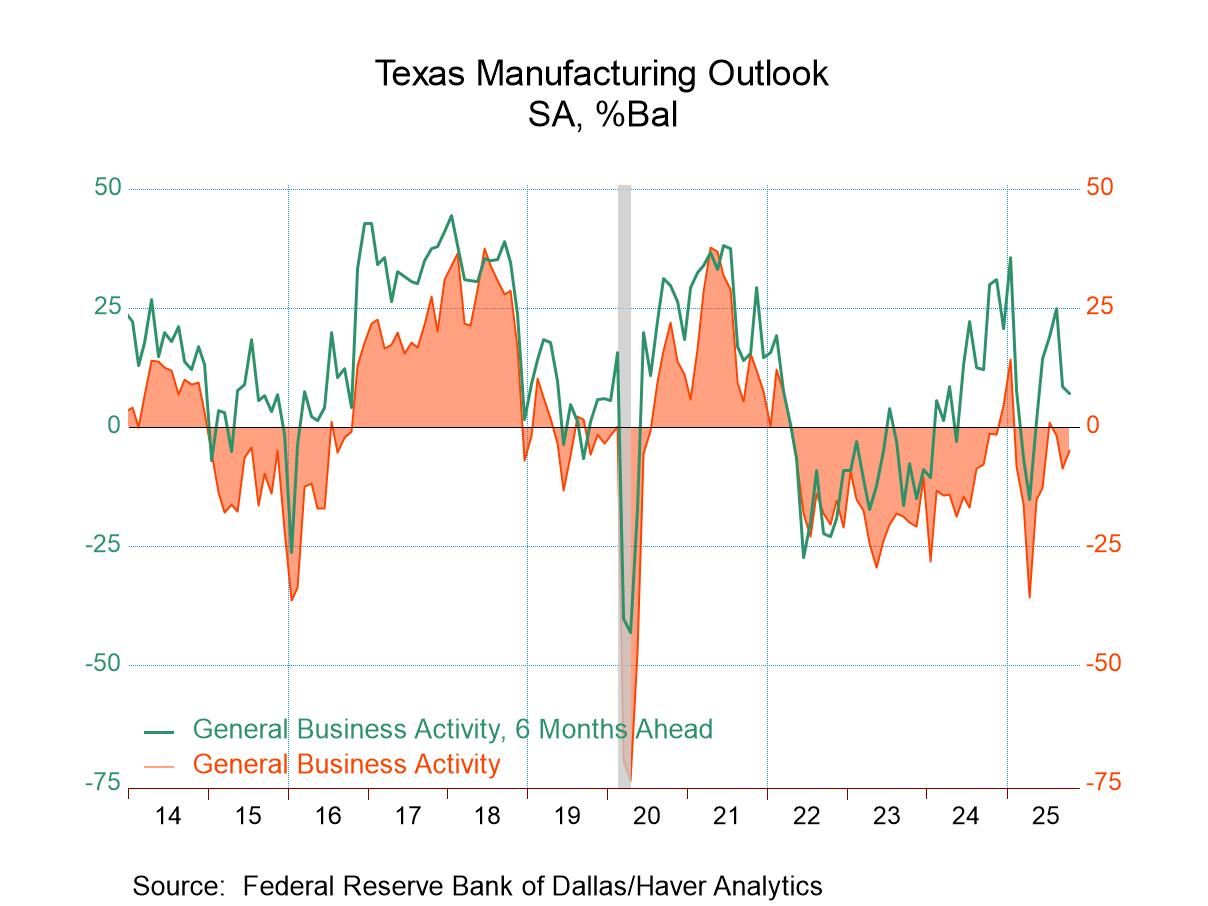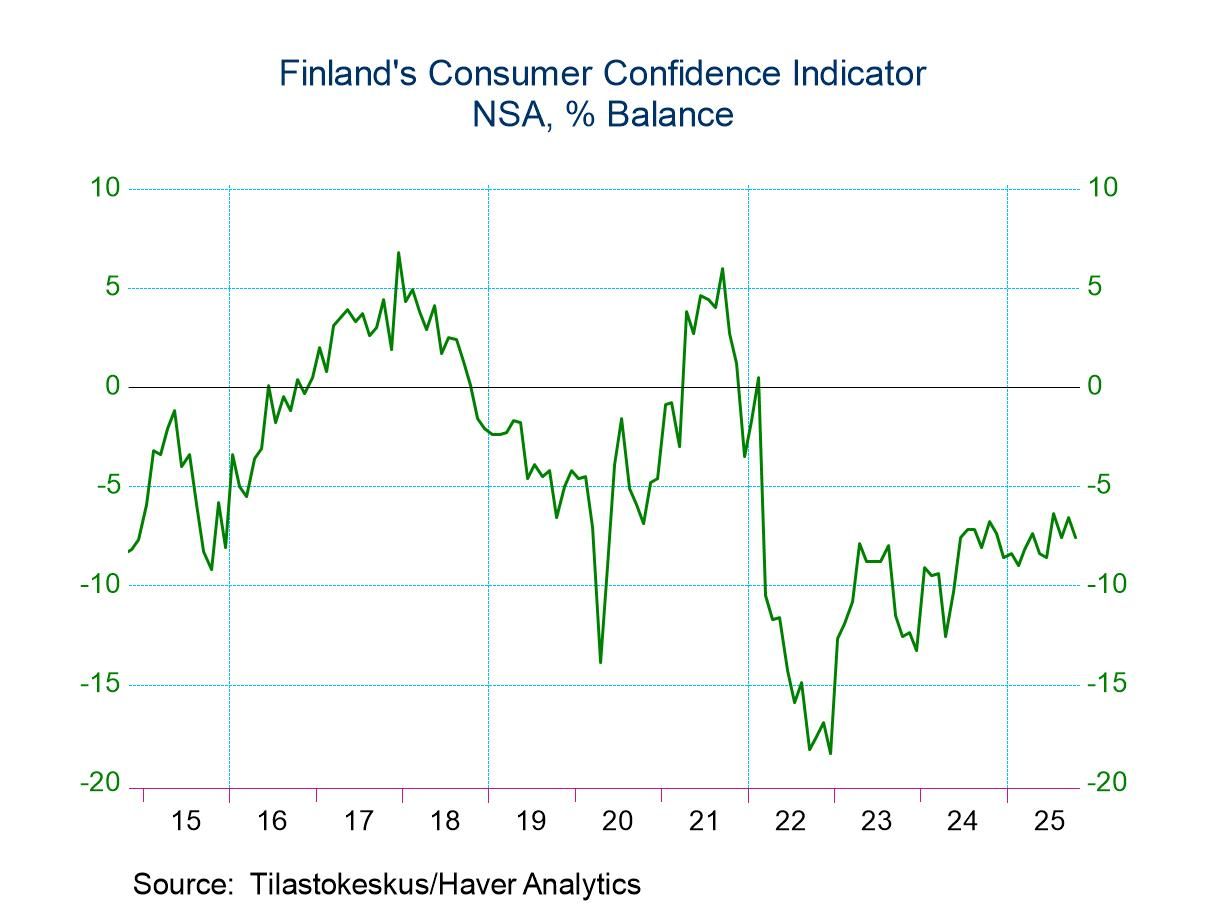 Global| Jun 03 2013
Global| Jun 03 2013U.S. ISM Composite Factory Sector Index Falls to Recovery Low
by:Tom Moeller
|in:Economy in Brief
Summary
Forward momentum in the factory sector has disappeared. The Composite Index of manufacturing activity from the Institute for Supply Management fell to 49.0 during May from an unrevised 50.7 in April. Below the break-even point of 50, [...]
Forward momentum in the factory sector has disappeared. The Composite Index of manufacturing activity from the Institute for Supply Management fell to 49.0 during May from an unrevised 50.7 in April. Below the break-even point of 50, it was the lowest reading since the recession ended in June 2009. The figure disappointed consensus expectations for 50.5. Any figure above 50 indicates an increasing level of activity. During the last ten years, there has been a 69% correlation between the ISM index and the q/q change in real GDP.
Leading the overall index down was a fall in the production reading. The sharp decline to 48.6 brought it to the lowest level since May 2009. Also down hard was the new orders reading to 48.8, its lowest since April 2009. The separate index of new export orders dropped sharply to 51.0, a five month low. The employment reading slipped to 50.1, also a recovery-low. During the last ten years there has been an 88% correlation between the employment index and the m/m change in factory payrolls. Falling sharply in addition was the supplier delivery index to 48.7, thus indicating faster delivery speeds. Offsetting these declines was a modest rise in the inventories index to 49.0.
The prices paid index at 49.5 weakened further and indicated no rise in prices. Nineteen percent of firms raised prices but twenty percent lowered them. During the last ten years there has been a 65% correlation between the index and the m/m change in the intermediate producer price index.
The figures from the Institute For Supply Management (ISM) are diffusion indexes and can be found in Haver's USECON database. The expectations data are in the AS1REPNA database.
The Ten Suggestions is the title of Fed Chairman Ben S. Bernanke's speech and it can be found here.
| ISM Mfg | May | Apr | Mar | May'12 | 2012 | 2011 | 2010 |
|---|---|---|---|---|---|---|---|
| Composite Index | 49.0 | 50.7 | 51.3 | 52.5 | 51.7 | 55.2 | 57.3 |
| New Orders | 48.8 | 52.3 | 51.4 | 57.2 | 52.9 | 56.4 | 59.2 |
| Production | 48.6 | 53.5 | 52.2 | 54.1 | 53.6 | 57.4 | 61.0 |
| Employment | 50.1 | 50.2 | 54.2 | 55.9 | 53.8 | 57.4 | 57.3 |
| Supplier Deliveries | 48.7 | 50.9 | 49.4 | 49.2 | 50.0 | 54.7 | 58.1 |
| Inventories | 49.0 | 46.5 | 49.5 | 46.0 | 48.2 | 50.1 | 50.8 |
| Prices Paid Index (NSA) | 49.5 | 50.0 | 54.5 | 47.5 | 53.2 | 65.2 | 68.9 |
Tom Moeller
AuthorMore in Author Profile »Prior to joining Haver Analytics in 2000, Mr. Moeller worked as the Economist at Chancellor Capital Management from 1985 to 1999. There, he developed comprehensive economic forecasts and interpreted economic data for equity and fixed income portfolio managers. Also at Chancellor, Mr. Moeller worked as an equity analyst and was responsible for researching and rating companies in the economically sensitive automobile and housing industries for investment in Chancellor’s equity portfolio. Prior to joining Chancellor, Mr. Moeller was an Economist at Citibank from 1979 to 1984. He also analyzed pricing behavior in the metals industry for the Council on Wage and Price Stability in Washington, D.C. In 1999, Mr. Moeller received the award for most accurate forecast from the Forecasters' Club of New York. From 1990 to 1992 he was President of the New York Association for Business Economists. Mr. Moeller earned an M.B.A. in Finance from Fordham University, where he graduated in 1987. He holds a Bachelor of Arts in Economics from George Washington University.


